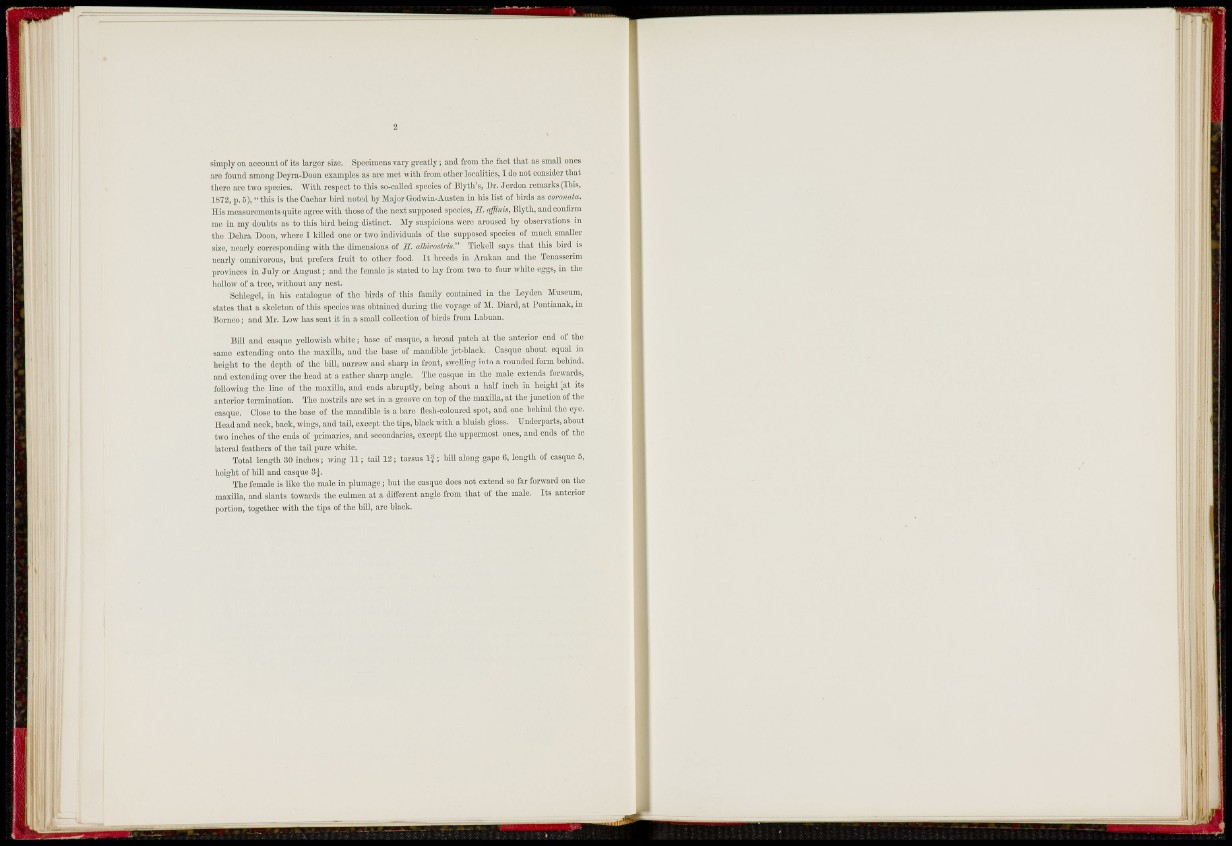
simply on account of its larger size. Specimens vary great ly; and from the fact that as small ones
are found among Deyra-Doon examples as are met with from other localities, I do not consider that
there are two species. With respect to this so-called species of Blyth's, Dr. Jcrdon remai'ks (Ibis,
1872, p, 5), " thi s is the Cacliar bird noted by Major Godwin-Austen in his list of birds as coronata.
His measurements quite agree with those of the next supposed species, U. affiriis, Blyth, and confii-m
me in my doubts as to this bird being distinct, ily suspicions were ai-oused by observations in
tlie Dehra Boon, where I killed one or two individuals of the supposed species of much smaller
size, nearly corresponding with the dimensions of R. alUroslris." Tiekcll says that this bird is
nearly omnivorous, but prefers fruit to other food. It breeds in Arakan and the Tenassernn
provinces in Jul y or August ; and the female is stated to lay from two to four white eggs, in the
hollow of a tree, without any nest.
Schlegel, in his catalogue of the birds of this family contained in the Leyden lluseum,
states that a skeleton of this species was obtained during the voyage of i l . Diard, at Pontianak, in
Borneo; and l l r . Low has sent it in a small collection of birds from Labuan.
BiU and casque yellowish white; base of casque, a broad patch at the anterior end of the
same extending onto the jnaxilla, and the base of mandible jet-black. Casque about equal in
height to the depth of the bill, narrow and sharp in front, swelling into a rounded form behind,
and extending over the head at a rather sharp angle. The casque in the male extends forwards,
following the Imo of the maxilla, and ends abruptly, being about a half inch in height [at its
anterior termination. The nostrils are set in a groove on top of the maxUla, at the junction of the
casque. Close to the base of the mandible is a bare liesh-coloured spot, and one behind the eye.
Head and neck, back, wings, and tail, except the tips, black wi th a bluish gloss. Underparts, about
two inches of the ends of primaries, and secondaries, except the uppermost ones, and ends of the
lateral feathers of the tail pure white.
Total length 30 inchcs; wing 11; tail 12; tarsus 1- | ; bill along gape 6, length of casque 5,
height of bill and casque
The female is like the male in plumage; but the casque does not extend so far forward on the
maxilla, and slants towards the culmen at a different angle from that of the male. Its anterior
portion, together with the tips of the bill, arc black.